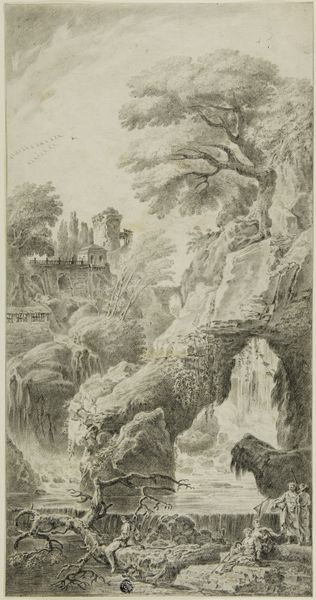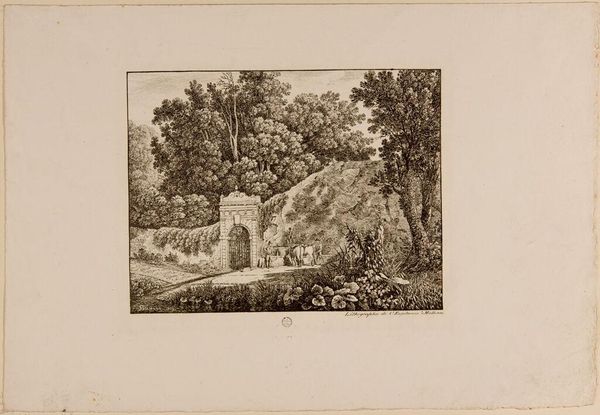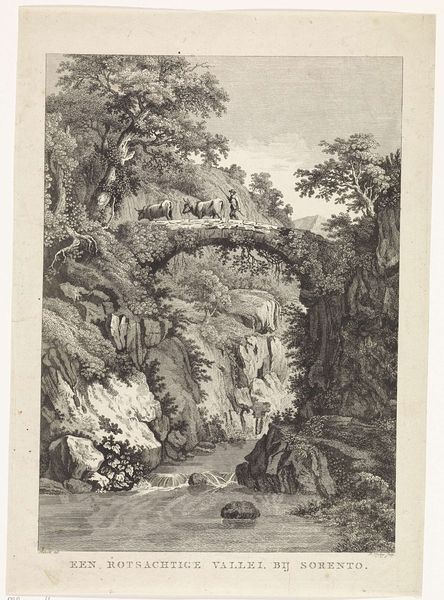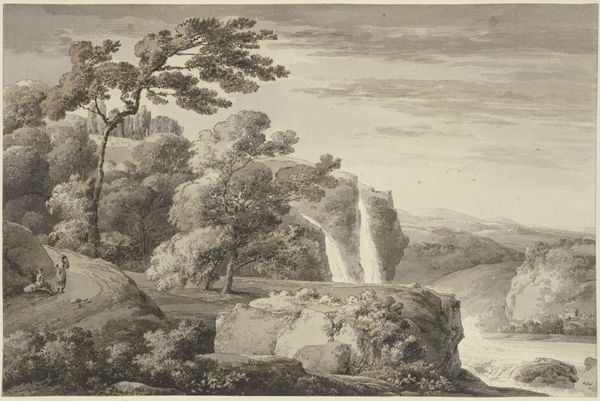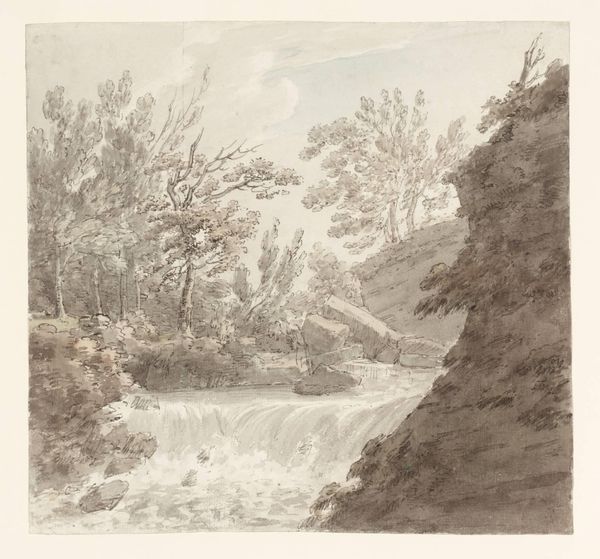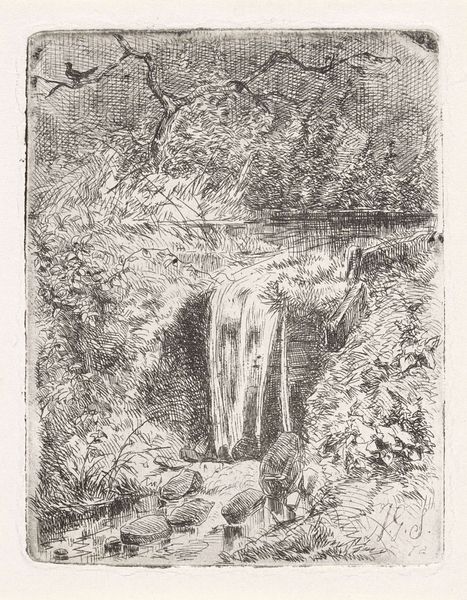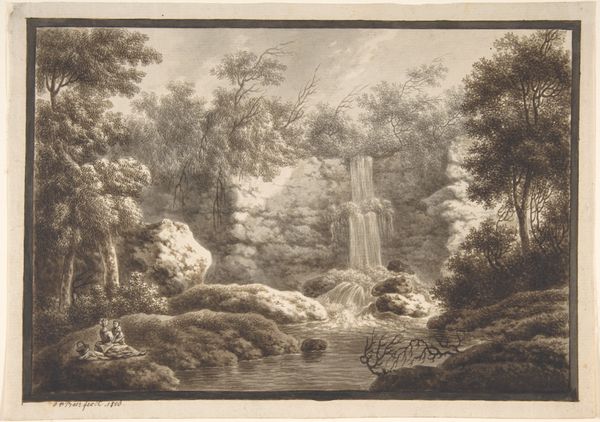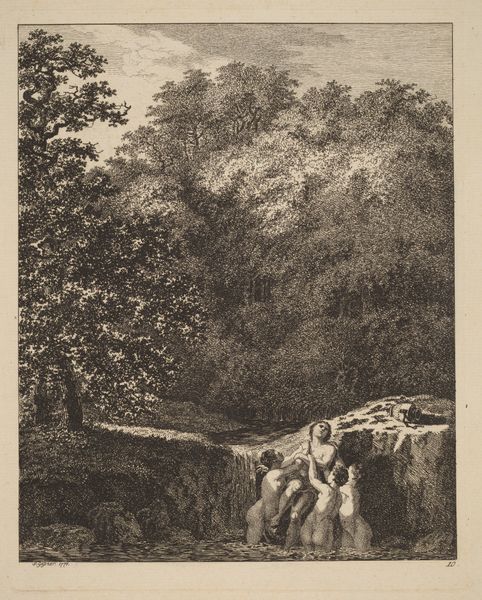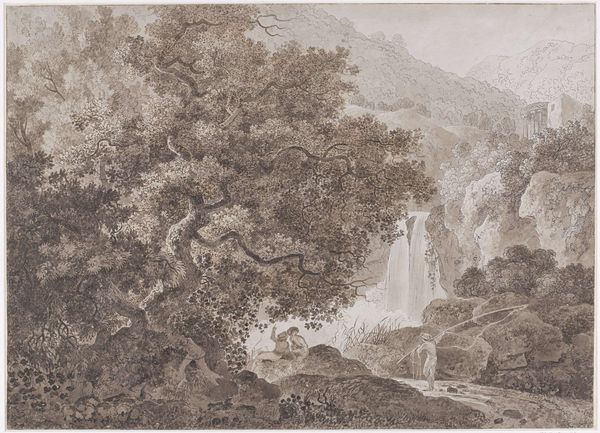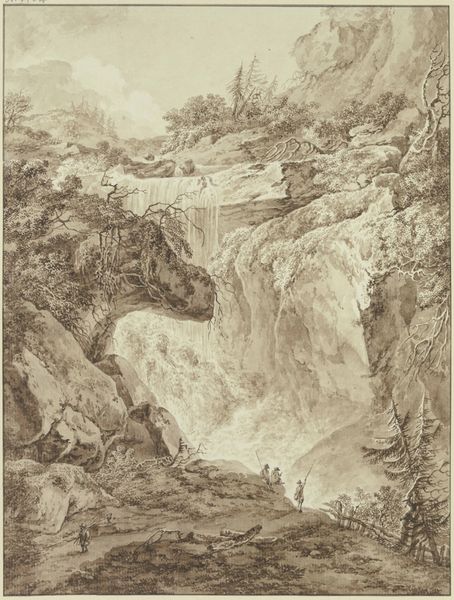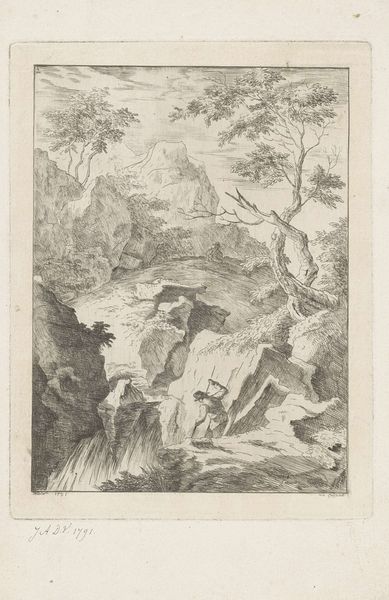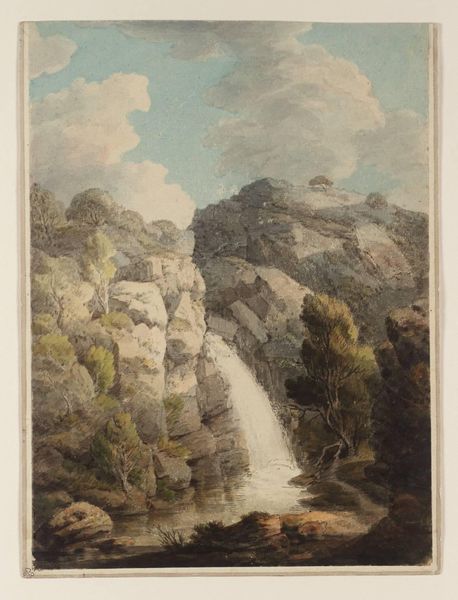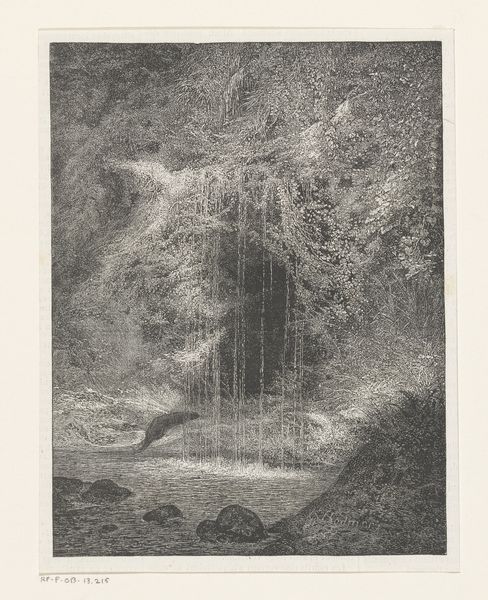
print, etching
# print
#
etching
#
landscape
#
genre-painting
Dimensions: plate: 17.15 × 13.65 cm (6 3/4 × 5 3/8 in.) sheet: 25.72 × 20.8 cm (10 1/8 × 8 3/16 in.)
Copyright: National Gallery of Art: CC0 1.0
Curator: Immediately, the sharp contrast and textures give me a somber yet somehow still bucolic feeling. Editor: You're right. There’s a stark quality. I find myself drawn to Douglas Warner Gorsline's "Sniggling for Eel," created in 1946. This work, an etching on paper, depicts a figure climbing a stone structure next to a small waterfall. Curator: "Sniggling", from what I understand, involves tempting eels out of hiding with bait, often a worm threaded on a needle. The image certainly speaks to enduring methods of interacting with the natural world, a connection to older folkways perhaps. It evokes a time when knowledge of such skills was common. Editor: From a formal standpoint, the composition relies on contrasting textures. Notice the rough-hewn stone juxtaposed against the smooth cascade of water, emphasized by varying densities of hatching. This contrast emphasizes a visual hierarchy, directing the eye from the figure down the waterfall. Curator: Absolutely. I also see the waterfall, acting almost as a barrier or portal—symbolically separating the human and the wild. In our cultural memory, water has potent connotations from cleansing to rebirth to potential danger. Is this fisherman stepping into a liminal space? Editor: Interesting perspective. I appreciate how the density of lines defines space. Look at the upper right corner—the subtle suggestion of architecture blends with the vegetation, which blurs spatial clarity and flattens the perspective there, as if those ruins have become an intrinsic aspect of the landscape. Curator: Right, architecture and nature melding is a familiar motif with rich symbolism. It brings up ideas of humanity's footprint slowly being consumed, or reintegrated back. It is hard not to look at an image like this through a contemporary lens and not think of climate and the relationship with natural resources. Editor: Considering the work’s intrinsic components, it strikes me how Gorsline uses the limited palette of the etching to create a complex landscape. The density and direction of the lines become incredibly important in conveying light, depth, and mood. It's effective, despite the etching's limitations, in conveying so much spatial depth. Curator: A print can capture time. We imprint not only our skills but also our worries onto these simple sketches of everyday lives. I appreciate the detail about Gorsline choosing this simple yet deeply potent image, it becomes part of our collective symbolic repertoire. Editor: For me, taking a closer look revealed a clever composition and a real commitment to technique that ultimately elevates the artwork far beyond just its simple subject matter.
Comments
No comments
Be the first to comment and join the conversation on the ultimate creative platform.
